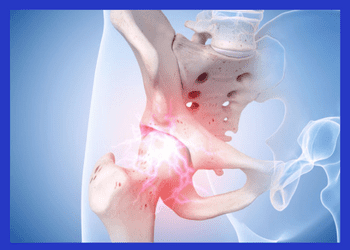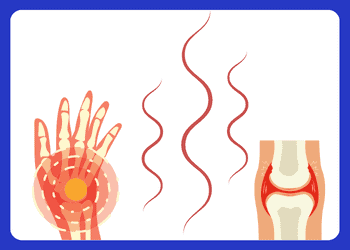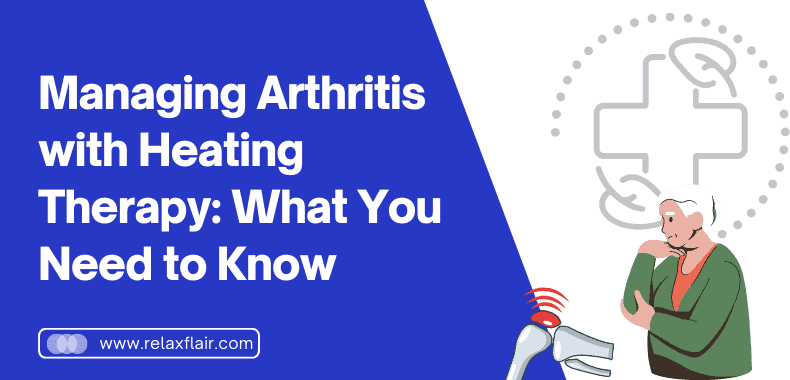Millions of people around the world are affected by arthritis and its associated pain, stiffness, and immobility. Unfortunately, there is no cure for this condition; however, heating therapy can provide relief to those who suffer from it. In order to help alleviate your symptoms and better manage your quality of life, here’s a helpful guide that covers everything you need to know about using heat as an effective form of arthritis management.
Combining the power of heat and massage, massage chairs that offer a built-in heat therapy function are quickly becoming essential stress relievers.
Whether you’re looking to soothe sore muscles, improve circulation or just relax after a long day – these chairs provide an unmatched level of comfort right at home! Enjoy the myriad benefits of heat therapy and massage without ever having to leave your abode.
Understanding What is Arthritis
Arthritis brings about inflammation and destruction to the joints, with over one-hundred different varieties. Osteoarthritis and rheumatoid arthritis are two of the most prevalent forms, yet there are other types like psoriatic arthritis, gout, lupus—and potentially much more.
 Distinguishing arthritis can be difficult, considering its symptoms are not unique.
Distinguishing arthritis can be difficult, considering its symptoms are not unique.
To identify the condition, a doctor will typically administer a physical exam, review past medical records and order diagnostic tests such as X-rays or blood tests. In rare cases, further examinations may be required in which joint fluid is removed to confirm the diagnosis.
Ultimately, arthritis is an everyday ailment that can cause tremendous discomfort and inflammation in the joints. It exists in various variations with unique indications and origins.
Recognizing potential risk factors of acquiring this disease as well as learning how to diagnose it are essential steps to take when handling its symptoms and receiving proper treatment.
Types of Arthritis and Their Causes
- Osteoarthritis: This type of joint pain is the result of age-related deterioration and erosions in the joints. Usually, it affects elders more than youngsters and can affect any part of the body where two bones meet.
- Rheumatoid Arthritis: An autoimmune disorder, Rheumatoid Arthritis is characterized by the body’s immune system mistakenly attacking and damaging its own joints. Unfortunately, the exact source of this condition has yet to be determined.
- Psoriatic Arthritis: Linked to psoriasis, this form of arthritis triggers joint aches and rigidity. Accompanying it are areas of red, flaky skin that will not go away.
- Gout: Uric acid accumulating in the body can lead to gout, a painful condition that involves crystals forming in the joints causing swelling and inflammation.
- Lupus: Lupus is an autoimmune ailment that can detrimentally affect multiple parts of the body, including its joints. This illness results in joint pain, inflammation, and stiffness.
Heating therapy is often most helpful when employed prior to activity or exercise, but can be used anytime. It’s also a great way to increase relaxation before bedtime and aid in achieving more restful sleep.
Common Symptoms of Arthritis
The symptoms of arthritis can vary depending on the type of arthritis and the severity of the condition. Some common symptoms of arthritis include:
- Joint pain
- Joint stiffness
- Swelling in and around the joints
- Decreased range of motion
- Fatigue
- Fever (in some cases)
- Redness and warmth in the joints (in some cases)
How Arthritis Affects the Body
Arthritis is a condition that can wreak havoc on your body in various ways. Not only does it lead to swelling, pain, and reduced mobility of the joints but also over time causes permanent joint destruction and contortion. In addition, arthritis may afflict other parts of your anatomy such as skin, eyes, or organs.
Risk Factors for Developing Arthritis
There are several factors that can increase the risk of developing arthritis, including:
- Age: The risk of developing arthritis increases as you get older.
- Genetics: Some types of arthritis are inherited.
- Gender: Women are more likely to develop rheumatoid arthritis than men.
- Injury: Joint injuries can increase the risk of developing arthritis later in life.
- Infection: Some types of arthritis, such as reactive arthritis, can be caused by an infection.
Benefits of Heating Therapy for Arthritis
The application of heat to afflicted joints can be a powerful way to manage arthritic pain and stiffness. Heating therapy increases blood circulation, reduces inflammation, and helps ease tense muscles; it’s no wonder why so many people rely on this popular method! Here are some of the benefits of heating therapy for arthritis:
 Heating therapy can help to relieve arthritis pain and stiffness by:
Heating therapy can help to relieve arthritis pain and stiffness by:
- Increasing blood flow: By widening blood vessels, heat can bring about a rush of circulation to damaged joints, ultimately alleviating inflammation and boosting recovery.
- Relaxing muscles: Applying warmth to tense muscles can considerably loosen them, making it possible for you to experience a reduction in pain and stiffness from your joints.
- Reducing inflammation: Applying heat to the afflicted joints can reduce inflammation, relax muscles, and decrease discomfort.
Scientific Evidence Supporting the Use of Heating Therapy for Arthritis
Several research studies have demonstrated that heat therapy can be useful for controlling arthritis-related pain and stiffness. Notably, a 2013 study in the Journal of Physiotherapy found that heating treatment was effective for decreasing discomfort and increasing agility among those with knee osteoarthritis. Similarly, another investigation published in the Annals of the Rheumatic Diseases reported favorable results from applying warmth to people suffering from rheumatoid arthritis–with substantial reductions seen in both pain intensity and stiffening sensations.
Potential Side Effects of Heating Therapy
While heating therapy is generally safe, there are some potential side effects to be aware of, including:
- Burns: Applying heat for too long or at too high a temperature can cause burns.
- Dehydration: Heat can cause sweating, which can lead to dehydration if fluids are not replaced.
- Worsening inflammation: In some cases, heat can worsen inflammation, so it is important to talk to a healthcare provider before using heat therapy.
Heating therapy is just one of many treatments available for managing arthritis pain and stiffness. Other treatments include medications, physical therapy, and surgery. The best treatment approach will depend on the individual and the severity of their arthritis symptoms.
How to Apply Heating Therapy at Home
There are several ways to apply heat therapy at home, including:
- Hot water bottle or heating pad: These can be applied directly to the affected joints for 15-20 minutes at a time.
- Warm bath or shower: A warm bath or shower can help to relax muscles and joints throughout the body.
- Warm towels: Warm towels can be applied to affected joints for 15-20 minutes at a time.
Precautions and Safety Considerations When Using Heating Therapy
When using heating therapy, it is important to:
- Use a temperature that is comfortable and safe
- Avoid applying heat directly to the skin
- Use a barrier, such as a towel, between the skin and the heat source
- Avoid using heat therapy if there is swelling or inflammation in the affected joint
- Talk to a healthcare provider before using heat therapy if there are any concerns or underlying medical conditions
Massage Chair Heating Therapy for Arthritis
Massage chairs are a great solution for providing soothing heat therapy to those living with arthritis. With built-in heating elements, these massage chairs can help to increase circulation, reduce inflammation and relax tense muscles – all of which contribute to achieving an optimal sense of relaxation and well-being.
A massage chair is a convenient solution for those suffering from the pain and rigidity of arthritis. With one at home, no appointment or travel to a healthcare provider is necessary – instead, individuals can enjoy regular heating therapy anytime they wish!
It is essential to keep in mind that massage chairs may be costly and not covered by insurance. Furthermore, some people find that they are ineffective for their arthritis symptoms or may even experience uneasiness from the pressure of the chair’s rollers. Before using a massage chair as heat therapy, it is critical to consult with a healthcare provider first so you can make sure it will meet your individual needs and medical conditions safely and appropriately.
Frequently Asked Questions
What Are the Benefits of Using Heat Therapy for Joint Pain?
Heat therapy is an all-natural and non-invasive way to soothe joint pain, stiffness, and inflammation. Not only does it help increase blood circulation in the problematic area for quicker healing but also eases tense muscles which lead to fewer spasms that can cause painful joints. All of these benefits make heat therapy a great option for anyone looking for relief without resorting to invasive treatments or chemical drugs.
Studies have demonstrated that heat therapy provides relief to those experiencing joint pain and stiffness due to osteoarthritis, rheumatoid arthritis, and fibromyalgia. Indeed, it is a secure and easy-to-access remedy for many people who are suffering from the discomforts of these conditions.
Is Heating Therapy Safe for Everyone?
Heating therapy is a viable option for alleviating pain and stiffness, yet it’s essential to recognize that this treatment might be unsafe for certain people. Those suffering from diabetes or heart disease may experience dangerous side effects due to heating therapy. It is of utmost importance to consult with a healthcare practitioner before beginning heat therapy, particularly for those who are pregnant or have decreased sensation in the treated area.
Although heating therapy can be beneficial and provide relief from pain, it should always be done under the guidance of an expert to ensure that it is safe and effective for your individual needs and medical conditions.
How Long Should I Use Heating Therapy for Arthritis Pain Relief?
If you’re looking for an effective, natural way to find relief from arthritis or other aches and stiffness, then look no further than heating massage therapy!
However, it’s essential that you consult with your healthcare provider before beginning any new treatment. Once approved by your doctor, be sure to follow the manufacturer’s instructions carefully when using this method of healing so as to prevent burns or other injuries. With proper care and usage, heating massage therapy may just provide the soothing remedy that you are seeking.
Understandably, any sort of warmth therapy may bring about possible negative side effects such as skin irritation or distress. If these appear, it is essential to stop using the treatment instantly. But if used properly under a healthcare provider’s supervision, heat therapy can be an effective and secure addition to your complete arthritis treatment plan that combines exercise and medication for improved quality of life free from aches and firmness.
Final Words
Heating massage therapy is a gentle and natural approach to reducing pain and rigidity due to arthritis or any other chronic condition. It’s usually secure and suitable for most people, yet it is essential that you consult with your doctor before commencing this form of treatment in order to ensure safety and appropriateness according to individual needs and medical circumstances.
With heating therapy, it’s essential to follow the manufacturer’s guidelines precisely and take necessary precautions in order to avoid any burns or other injuries. It is also critical that you remain vigilant for potential side effects such as skin irritation or discomfort; if either arises, discontinue use right away.
Heating therapy can be an invaluable part of a comprehensive treatment program for arthritis and other conditions. When combined with physical activity or medication, it may help reduce pain, and tightness, and improve the quality of life. With proper use under the supervision of a healthcare expert, heating therapy is considered safe and efficient for many individuals.
